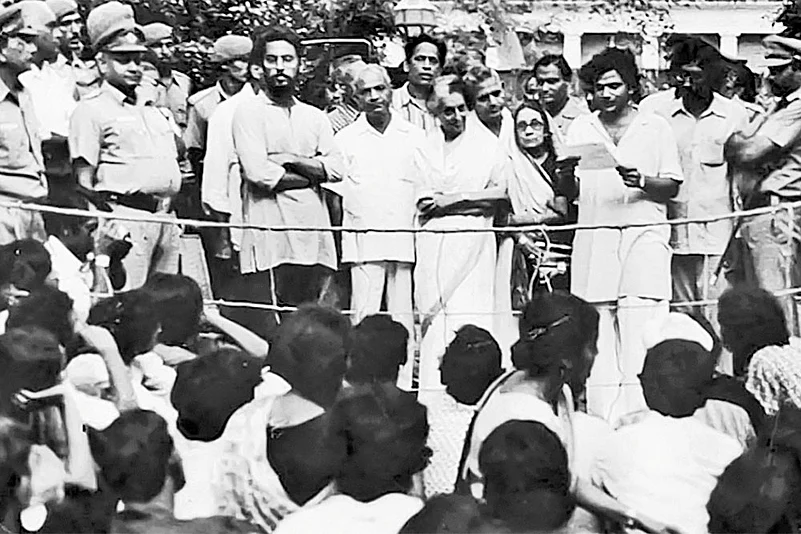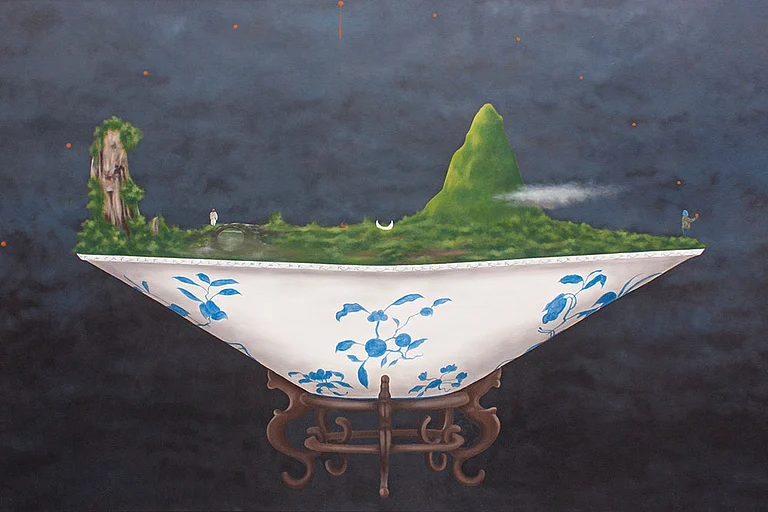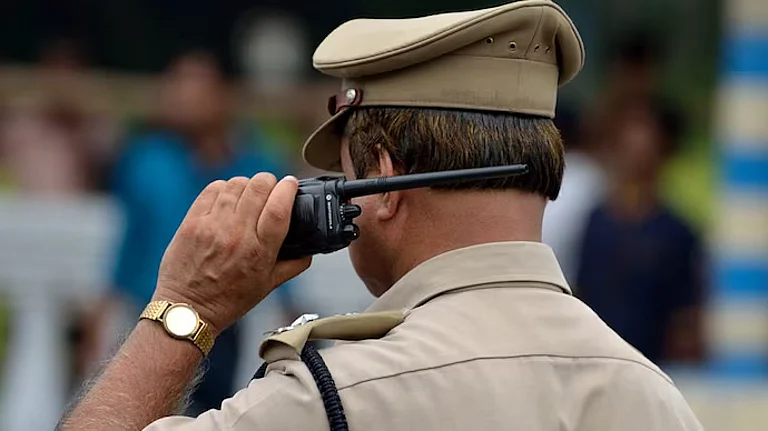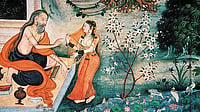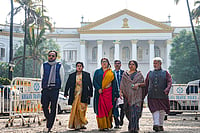The university is a unique place. It seeks a safe haven from everyday life so that the scholar can focus on things undisturbed by the rigmarole of daily life. It lives on a campus designed exclusively for it—where the outsider is excluded, thus introducing a state of perpetual tension with its neighbour—the rest of the population.
It raises fundamental existential questions, does not concede to the rhythms of daily life, which others have got used to. It bursts into protest and then recedes, only to regroup its resources to launch yet another challenge to its alter ego. It appears at once to be a site of questioning and ferment. The society ‘outside’ and often, even the disenfranchised within the university, have an uneasy relationship with it. It is both revered and reviled.
A significant part of the world’s population has received a college education. For many it was also the most memorable time of their lives. People associate the university with freedom—with a liberation of the mind and the spirit—with learning, with ideas, and with knowledge. We also acknowledge that the mind needs space to grow, that it needs to fight boundaries, and that it needs to be fearless in this endeavour.
These are truisms we shouldn’t have to ‘rediscover’ every few decades. But it does seem to happen. Every now and then, we lose sight of how magical this learning process is, and become cynical about what we once valued so much. The university, once again, becomes a space of conflict, of tension, a space to be derided, ridiculed, ironically for living in the same ivory tower that we valued it for. Perhaps this is the very paradox that generates the ambivalence towards it.
Do those of us who live outside the charmed world of university campuses, tend to view that life a bit wistfully? Do we yearn for its apparent serenity? Do we despise it for being effete?
To some extent, this might have to do with the specific circumstances in which the university arose—its raison d’être as well as its location and status. As an institution of higher learning with enrolments and awarding degrees, the university is less than a thousand years old, though some higher learning in specialised fields was instituted a couple of hundred years earlier. For centuries after that, universities existed primarily as institutions of learning for the elite.
Some of the earliest institutions of education were motivated by a desire to create an educated clergy or to study canonical law and its influence and relationship with civil law. This often placed these institutions under the protection of religious heads and to that extent out of the control of civic authorities, which managed the towns in which these institutions were located.
It follows, therefore, that wherever the notion of a separate space for scholars has cropped up—a space supposedly protected in order to allow scholars to focus on their work—it has also created resentment among townsfolk in those areas. A resentment perhaps stemming from the fact that this elite class did not have to sully its hands in the dirty routine of daily life, or that it was nurtured and protected in an environment which did not favour ordinary folk or was also out of reach for them. As universities expanded, this protection to universities broadened—campuses expanded territorially and also got more insulation from the rigours of municipal life. Thus, also, simultaneously giving rise to more resentment. Do those of us who live outside the charmed world of university campuses tend to view that life a bit wistfully? Do we yearn for its apparent serenity? Do we despise it for being effete?
The major expansion of universities started with the coming of the industrial revolution, with the establishment of large urban settlements, when the need was felt to expand learning, to ‘democratise’ education, both to be able to create an educated workforce, as well as to integrate larger populations moving into towns and cities to a ‘new way’ of living. Thus, we see a huge expansion of both the school and the university system from the late 18th into the early 19th century. This was both a cause and consequence of the new democratisation of political space that was replacing monarchies the world over.
But by the mid-20th century, the number of students in universities had expanded hugely. Students came to discover they had a voice. During the Second World War, as more and more young men got drafted into the army, students in the USA began to come together in widespread protests against the American involvement in it. The scale was historic and the geographical distance from the site unprecedented. The Kent State shootings in 1970—when four students were killed by the Ohio National Guard—were a trigger for widespread protests across America questioning primarily the American involvement in Vietnam.
Within a few days of taking over the American Presidency, Trump lashed out at students who had supported Palestine, cancelled visas of international students for their views on social media and started using immigration officials to throw students out of the country.
Already in the 60s, student revolt had escalated against the established order—against war as well as profiteering from it—against restrictions on speech as well as political activity on the campus. Suddenly students developed a perspective from which they were able to view actions of politicians as well as their elders. They took to the streets in France, the USA, Italy, in other parts of Europe, even in Japan. The anti-war movements led to wider protests, which were part of an emerging ‘New Left’ movement, one that argued against capitalism, as well as entrenched communism and sought a new direction to politics—one that was geared towards social justice, a more egalitarian society, and which also took the issue of racial discrimination head on. Often protests turned violent—in particular in Japan, and also in some places in Paris, from where students had to be removed from streets and campuses, with brute force.
Once again, this widespread student movement across the world saw the emergence of a backlash against it. The students wanted change, which meant disruption for an established middle class as well as the blue-collar worker.
Now disruption is anathema to daily life and to survival. The strength and cohesiveness of the student movement, unfortunately, led to a counter force of blue-collar workers and townspeople against what the students stood for. Student protests disrupted daily life, and that united city dwellers against them. Students asked for change in the order of things, a concept ordinary folk could not comprehend and this led to more antagonism.
One can see traces of this resentment against students in US President Donald Trump’s MAGA (Make America Great Again) movement, which argued vehemently against student bank loan waivers proposed by the Joe Biden administration towards the end of its term. For MAGA, which had in it many young people who had failed to make it to the universities because of a paucity of finances (American universities charge huge fees which are beyond the paying capacity of a large section of the population), this proposed waiver was like rubbing salt in their wounds—first, they themselves could not go to college because they couldn’t afford it. Now, those who had been given bank loans for their education were being allowed to get off scot-free.
It was this antagonism of MAGA to current students which emboldened Trump to go after students who participated in protests against Israel’s attack on Gaza. Within a few days of taking over the American presidency, he lashed out at students who had supported Palestine, cancelled visas of international students for their views on social media and started using immigration officials to throw students out of the country. He then proceeded to slash or attack the financial support systems of universities in an attempt to make them subservient to his will.
In India too, the ‘professor’ is at once a figure that is idealised and ridiculed. This contradictory emotional response is worth looking at. How is it that in India, where education has been democratised and large numbers of people have received higher education, we still see so much hostility to universities like Jawaharlal Nehru University (JNU)? We need not repeat the fracas that has happened there. Suffice it to say that much of the hostility came from the privileged sections of society that have enjoyed the benefits of higher education and found themselves comfortable jobs as a result.
Yet another way of looking at the tension between the university and the city is to see it as a clash of generations. The university students are in the last stage of protest against their fathers’ generation—the revolt that the teenager raises against the parents’ generation corresponds to the protests by students at the university. Here, the student is ushered into a world of new ideas that disturb both home and the world. It is a struggle in which the student tries to seize the moment to question established values, while the Establishment (both domestic and public) tries very hard to protect the older turf. A war which did not fully play itself out at home comes to the fore in student movements. It is a struggle about who will inherit the earth and what exactly will be the nature of the earth that will be available for inheriting.
(Views expressed are personal)
MORE FROM THIS ISSUE
Pankaj Butalia is a Delhi-based filmmaker who taught economics at Delhi University for 20 years






